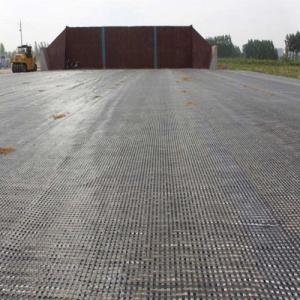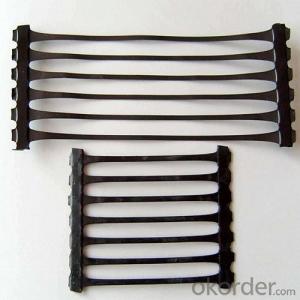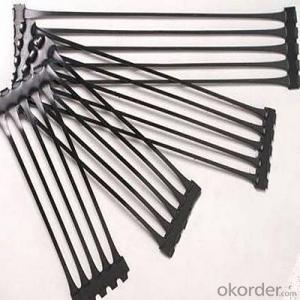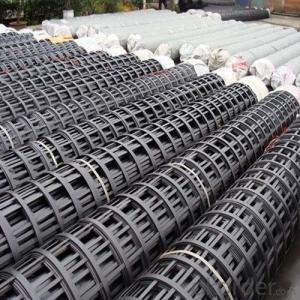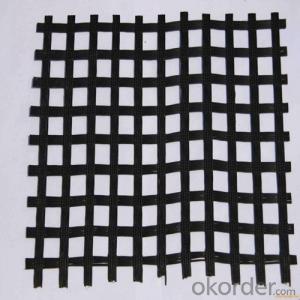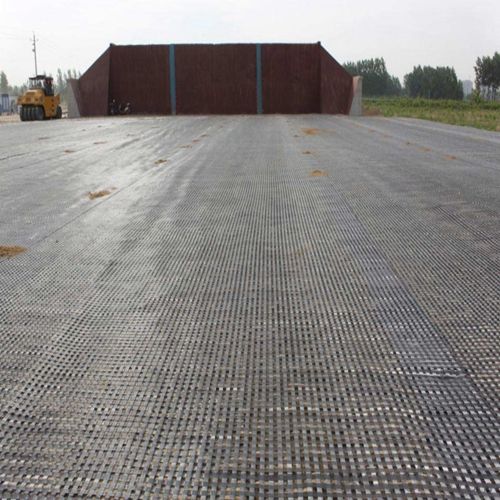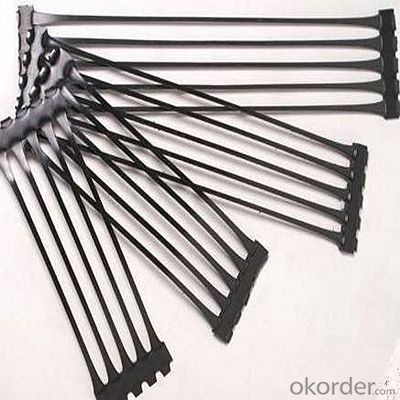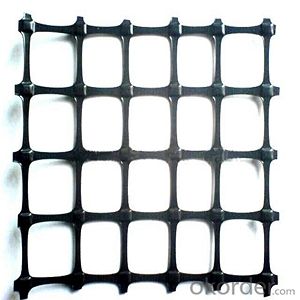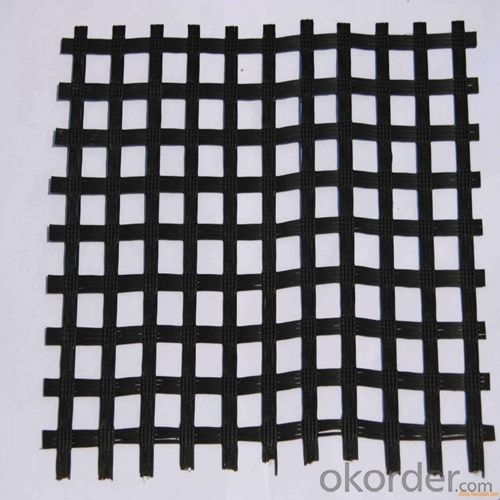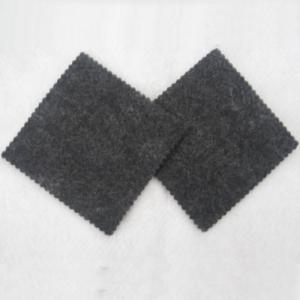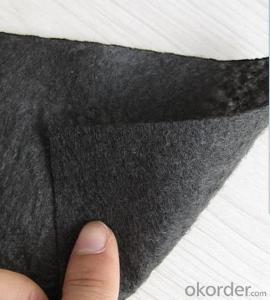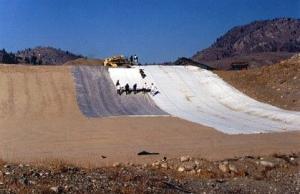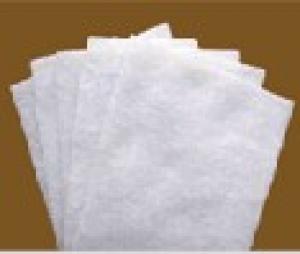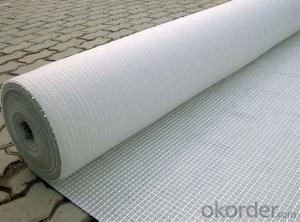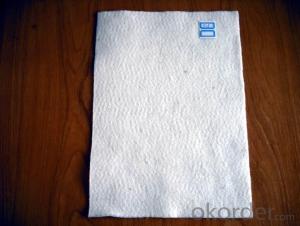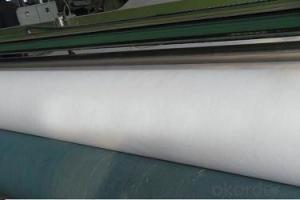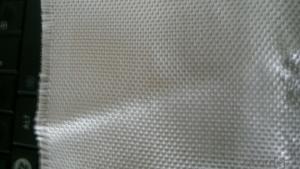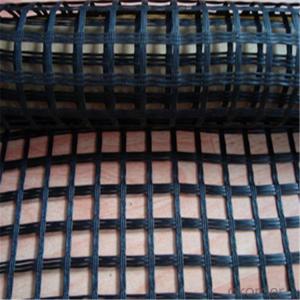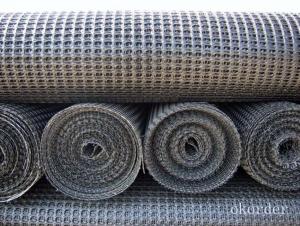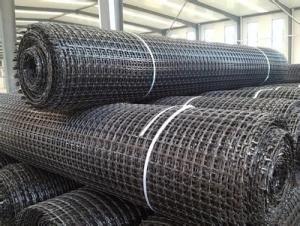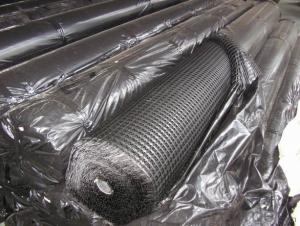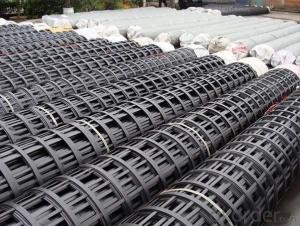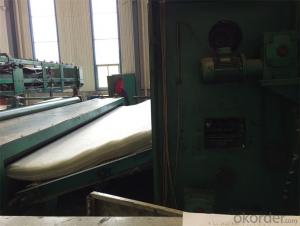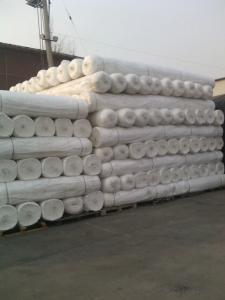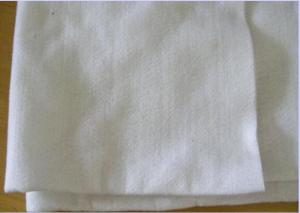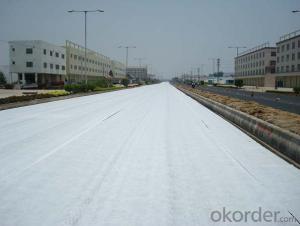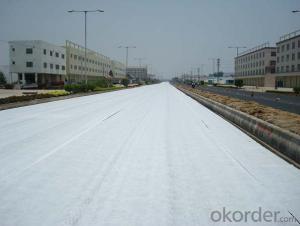160 Nw Geotextile - PP Fiberglass Geogrid with High Tensile Strength
- Loading Port:
- China main port
- Payment Terms:
- TT OR LC
- Min Order Qty:
- 1000 m²
- Supply Capability:
- 1000000 m²/month
OKorder Service Pledge
OKorder Financial Service
You Might Also Like
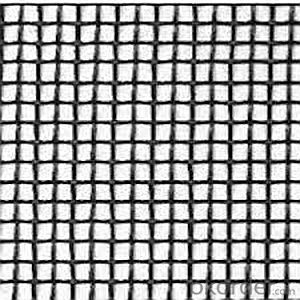

Products Description
Fiberglass geogrid is a kind of planar mesh material using alkali-free fiberglass yarn as base body and then coated with high quality modified asphalt. It is warp knitted with oriental structure which gives full play of yarn strength and improves its mechanical property to make the product high tensile, tearing and creep-resistant. Moreover, the composite property of coating with asphalt makes full protection of the fiberglass matrix and greatly improves its wear and shear resistance. All the advantageous functions make the product have a good performance in pavement strengthening, track cracking and solving difficulties of strengthening the bituminous pavement.
Material Fiberglass Material Polyester
Tensile Strength: 25-25KN; 30-30KN; 50-50KN; 80-80KN; 100-100KN; 120-120KN;
Road Size: 3.95x100m; as customer required;
Production function
1.It can be applied in all kinds of roads,airports to enhance the roadbed;
2.It can be applied in a large car park and terminal freight yard,etc. to strengthen the foundations of a permanent load;
Our Service
Quality assurance
1.On a regular basis or as per your request,we entrust national testing agencies to conduct quality inspections
2. Strictly in accordance with the ISO9001-2008 international quality system standard,we monitor and manage the whole process throughout production,quality testing,and measurement to ensure product quality
3. For quality-related construction delay or substandard construction(except for damage or losses due to customer’s responsibility or irresistible natural disasters),we have refunding,replacement,and repair services.We will respond to customers’ feedbacks on quality issues within 24 hours.
Packaging & Shipping
Packing: PLASTIC FILM INSIDE, AND WOVEN BAG OUTSIDE
Shipping: About 15 days after receipt the deposit
FAQ:
Q: What kind of payments does jenor support?
A: T/T, L/C, Cash are accepted.
Q: Do you charge for the samples?
A: Accordeing to our company policy, the samples are free, we only charge the freight fee. And we will return the freight fee during the next order.
Q: Can you produce according to customers' design?
A: Sure, we are professional manufacturer, OEM and ODM are both welcome.
Q: Do you have other products?
A: Yes, please check the pictures:
- Q: Are geotextiles effective in preventing soil contamination?
- Yes, geotextiles are effective in preventing soil contamination. They act as a protective barrier between the soil and potential contaminants, such as pollutants or invasive species. Geotextiles help to filter and separate different soil layers, preventing the migration of harmful substances and maintaining the integrity of the soil. Additionally, they can aid in soil stabilization and erosion control, further reducing the risk of contamination.
- Q: How do geotextiles improve the performance of drainage systems?
- Geotextiles improve the performance of drainage systems by enhancing filtration, preventing soil erosion, and promoting water flow, thus increasing the overall efficiency and longevity of the drainage system.
- Q: What are the key considerations for geotextile installation in high-altitude regions?
- When installing geotextiles in high-altitude regions, there are several key considerations to keep in mind. Firstly, the extreme weather conditions typically found in high-altitude areas, such as low temperatures, strong winds, and heavy snowfall, can impact the installation process. Therefore, selecting geotextiles with high durability and resistance to these conditions is crucial. Secondly, proper site preparation becomes even more important in high-altitude regions. The ground should be thoroughly assessed for its stability and potential frost heaving. Adequate measures, such as ground stabilization techniques and proper drainage systems, should be employed to ensure the long-term effectiveness of the geotextile installation. Furthermore, the selection of suitable installation methods is crucial in these regions. The use of specialized equipment and techniques, such as anchoring systems or thermal bonding, may be necessary to counteract the harsh environmental conditions and ensure proper geotextile performance. Lastly, it is essential to consider the environmental impacts of the geotextile installation in high-altitude regions. This includes adhering to local regulations and best practices to minimize disturbance to sensitive ecosystems and wildlife habitats. Overall, key considerations for geotextile installation in high-altitude regions include selecting durable materials, conducting thorough site preparation, using suitable installation methods, and addressing environmental concerns.
- Q: What are the key considerations for geotextile installation in high water flow areas?
- Some key considerations for geotextile installation in high water flow areas include selecting a geotextile material with a high flow rate to allow for effective water drainage, ensuring proper anchoring and securing of the geotextile to prevent displacement, conducting thorough site investigations and assessments to determine the appropriate installation method and design, and monitoring the performance of the geotextile over time to identify any maintenance or repair needs. Additionally, considering the environmental conditions and potential impact on the geotextile's durability is crucial in high water flow areas.
- Q: How do geotextiles help with filtration in stormwater management systems?
- Geotextiles help with filtration in stormwater management systems by acting as a barrier that allows water to pass through while trapping and retaining sediments and pollutants. They prevent the clogging of drainage pipes and channels, allowing for effective water flow and reducing the risk of flooding. Geotextiles also enhance the quality of water by removing harmful substances and promoting the natural filtration process, thereby improving overall stormwater management.
- Q: Why do you want to add 1 to the amount of geotextile
- There are overlapping area and loss, I am specializing in the production of geotextiles
- Q: What are the different factors to consider when selecting a geotextile?
- When selecting a geotextile, several factors need to be considered. These include the project's specific requirements, such as the expected load and traffic conditions, the soil type and composition, the desired lifespan of the geotextile, and any environmental considerations. Additionally, factors such as the geotextile's strength, permeability, and compatibility with other materials used in the project should also be taken into account.
- Q: How do geotextiles contribute to soil compaction control?
- Geotextiles contribute to soil compaction control by acting as a barrier between the soil layers, preventing them from mixing and reducing the risk of compaction. They distribute the load applied on the soil more evenly, reducing the pressure on the soil particles and minimizing compaction.
- Q: How are geotextiles tested for strength and durability?
- Geotextiles are typically tested for strength and durability through various methods such as tensile strength tests, puncture resistance tests, tear resistance tests, and UV stability tests. These tests help determine the geotextiles' ability to withstand different forces, environmental factors, and potential wear and tear, ensuring their quality and performance in different applications.
- Q: Geotextile construction inspection batch ye do?
- Willing to smash the acceptance of smashing acceptance in vain
Send your message to us
160 Nw Geotextile - PP Fiberglass Geogrid with High Tensile Strength
- Loading Port:
- China main port
- Payment Terms:
- TT OR LC
- Min Order Qty:
- 1000 m²
- Supply Capability:
- 1000000 m²/month
OKorder Service Pledge
OKorder Financial Service
Similar products
Hot products
Hot Searches
Related keywords
